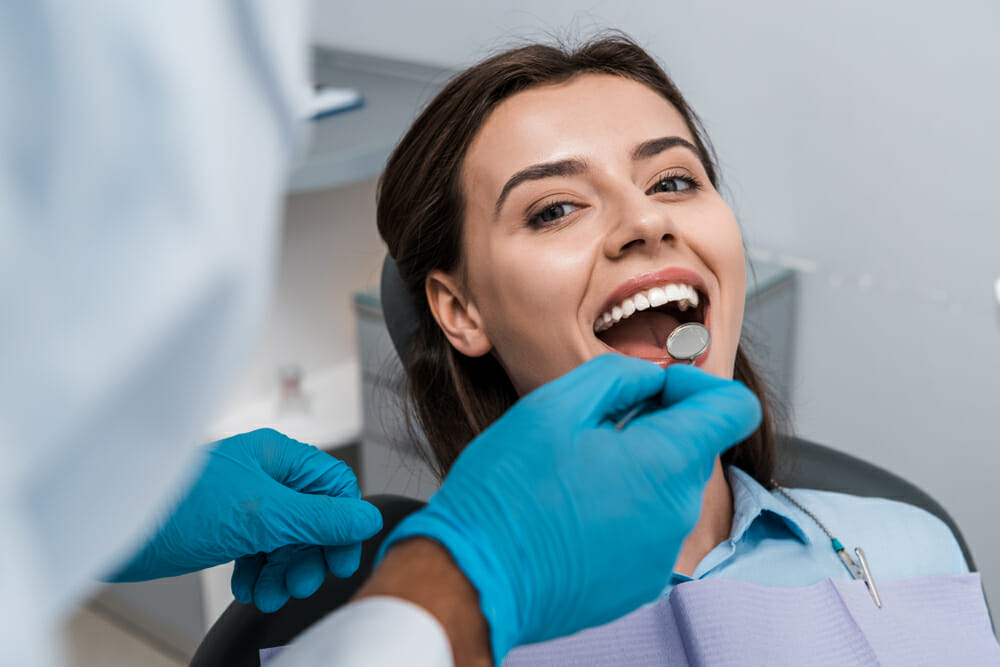Legacy Orthodontics Fundamentals Explained
Table of ContentsHow Legacy Orthodontics can Save You Time, Stress, and Money.The smart Trick of Legacy Orthodontics That Nobody is DiscussingThe Definitive Guide to Legacy OrthodonticsThe Main Principles Of Legacy Orthodontics Legacy Orthodontics for Dummies
In enhancement, we supply flexible therapy timetables, adaptable settlement options and an enjoyable, enjoyable experience.An orthodontist is a dental expert educated to detect, avoid, and deal with teeth and jaw irregularities. Orthodontists work with people of all ages, from kids to grownups.
Malocclusion, or misaligned teeth, can result in oral concerns, including tooth degeneration, gum tissue condition, and tough or unpleasant chewing. But not every person is born with straight teeth. If you have a poor bite or large rooms between your teeth, you may intend to seek advice from a dental expert focusing on orthodontic care.
4 Easy Facts About Legacy Orthodontics Shown
( Photo Credit History: DigitalVision/Getty Images) Orthodontists make use of taken care of and removable dental tools, like braces, retainers, and bands, to alter the setting of teeth in your mouth. Orthodontic therapy is for oral abnormalities, including: Crooked teethBite problems, like an overbite or an underbiteCrowded teeth or teeth that are also much apartJaw misalignmentThe goal of orthodontic treatment is to improve your bite.
While you could assume of orthodontists as mostly for kids or teens that require dental braces, they can deal with oral problems at any type of age. Orthodontists go to college, oral school, and orthodontic college.
All orthodontists are dental experts, however not all dental experts are orthodontists. Orthodontic residency programs provide extensive, focused instruction for dental professionals. They concentrate on 2 areas: Just how to effectively and safely relocate teeth Just how to properly lead growth in the teeth, jaw, and faceOnce an orthodontist has actually finished training, they have the option to become board certified.
Unknown Facts About Legacy Orthodontics
Imbalance, or malocclusion, is the most common factor people see an orthodontist. It is hereditary and is the outcome of size differences in between the upper and reduced jaw or in between the jaw and teeth. Malocclusion leads to tooth overcrowding, a misshapen jaw, or uneven bite patterns. Malocclusion is generally treated with: Your orthodontist connects metal, ceramic, or plastic square bonds to your teeth.
If you have just small malocclusion, you may be able to use clear dental braces, called aligners, as opposed to traditional dental braces (https://giphy.com/channel/legacyortho). Some people require a headwear to aid move teeth into line with pressure from outside the mouth. After dental braces or aligners, you'll need to put on a retainer. A retainer is a custom-made gadget that keeps your teeth in location.
They're most commonly utilized on kids. They can develop extra room in the mouth without needing to draw teeth. If you have a major underbite or overbite, you may need orthognathic surgery (also called orthodontic surgery) to extend or shorten your jaw. Orthodontists make use of wires, medical screws, or plates to support your jaw bone.
You might need to see an orthodontist if you have: Crowding or not enough room for all of your teethOverbite, when your upper teeth come your base teethUnderbite, when your bottom teeth are also much forwardSpacing or concerns with gapsCrossbite, which is when your top teeth fit behind your base teeth when your mouth is closedOpen bite or a vertical void between your front base and top teethMisplaced midline, when the center of your bottom and top teeth do not align Dealing with an oral malocclusion can: Make biting, eating, and talking easierImprove the balance of our face and your overall appearanceEase discomfort from temporomandibular joint problemsDifferent your teeth and make them simpler to clean up, assisting protect against tooth decay or dental caries It's frequently a dental practitioner that initially notices misaligned teeth during a routine test.
The Main Principles Of Legacy Orthodontics

Throughout your first orthodontic examination, you'll likely have: An oral examPhotos taken of your face and smileDental X-raysPanoramic (360 degree) see here X-rays of your face and headImpressions to develop mold and mildews of your teethThese examinations will certainly assist your orthodontist recognize just how to wage your therapy. leesburg orthodontist. An orthodontist is a dental expert who's had training to treat your teeth and jaw
Orthodontists might perform surgical procedure, exams,X-rays,and more to aid you attain a more comfy, healthier smile. An orthodontist is concentrated on your bite, so something like a damaged tooth would certainly be taken care of by a dental expert. Orthodontists are dental practitioners however not all dental practitioners are orthodontists. Orthodontists are concentrated on your bite, or the method your teeth meshed, and the straightness of your teeth.
Ever questioned just how celebs constantly appear to have completely aligned teeth? The solution often depends on the knowledgeable hands of an orthodontist. Yet just what does an orthodontist do? Orthodontists are dental specialists who concentrate on remedying irregularities in the teeth and jaws. Their proficiency surpasses simply creating a stunning smile; it includes boosting your general dental wellness and function.
8 Simple Techniques For Legacy Orthodontics

While dental braces are the most commonly acknowledged orthodontic treatment, orthodontists have a diverse toolkit at their disposal. The specific approach chosen depends on the extent of the case, the patient's age, and individual preferences. These tried-and-true braces make use of a system of braces bound to the teeth and linked by cables.
These removable trays are personalized to progressively move the teeth's setting. In instances of narrow jaws, palatal expanders can be used to develop area for proper tooth placement.